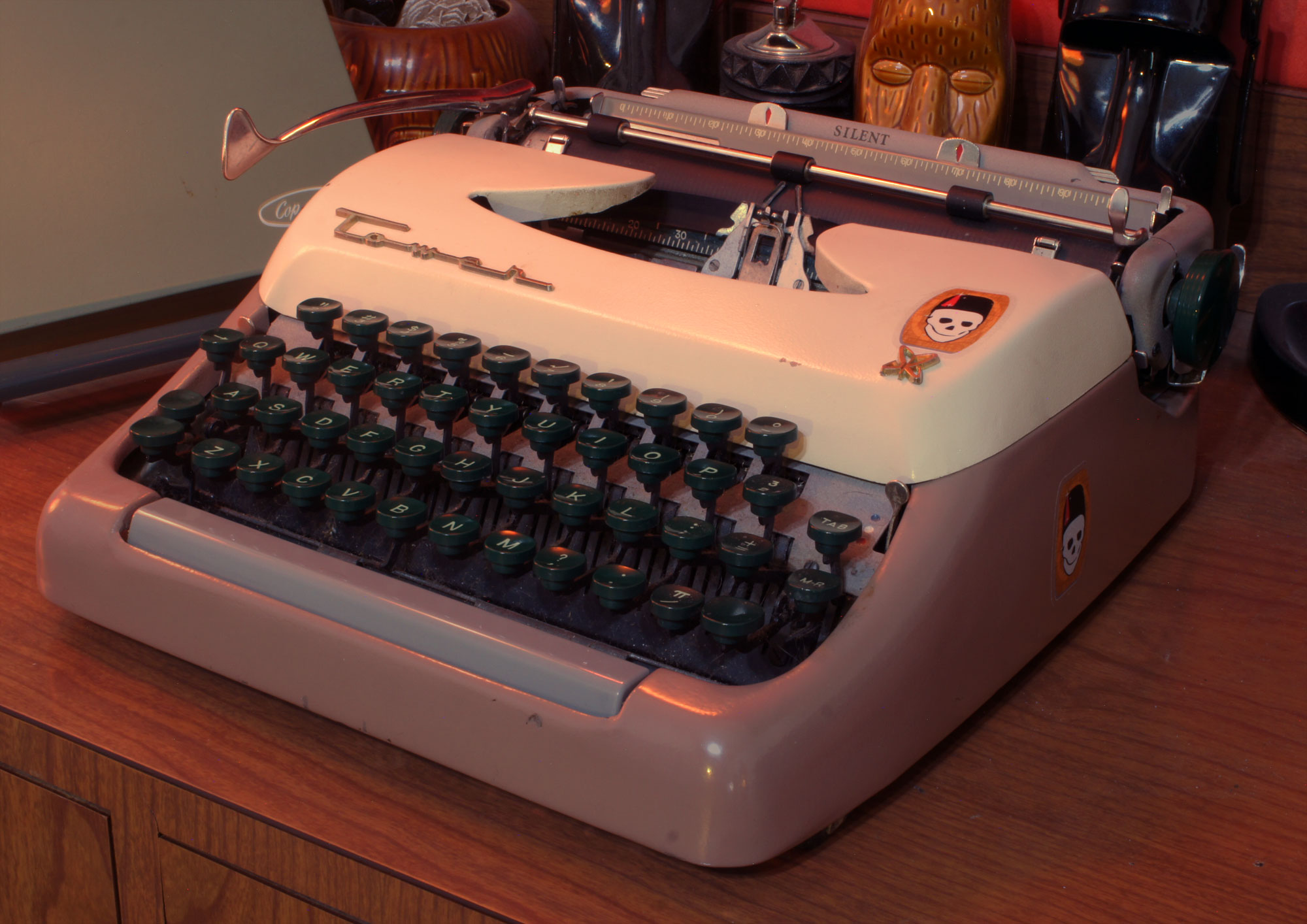
Weapon of Choice: “Einstein” 1956 Tower Silent Atomic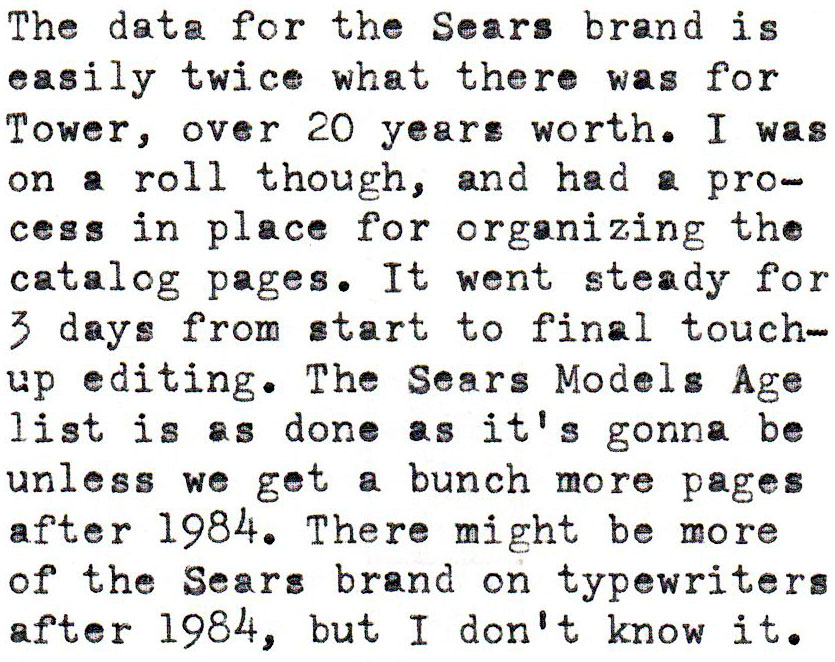
New Sears Serial Number Page at the Typewriter Database!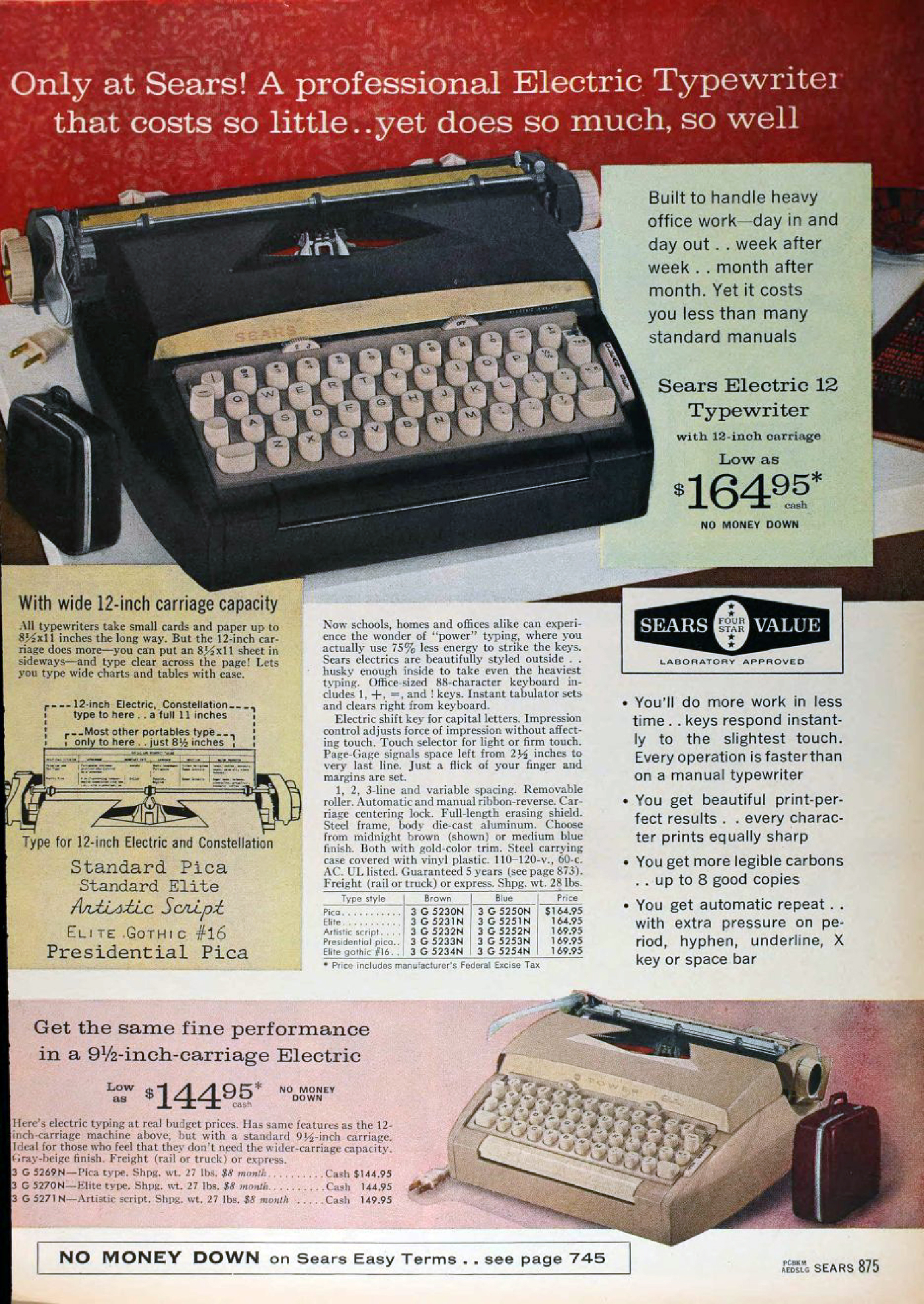
But before we worry about how it all ended, let’s look at where it began. Fall of 1963 – the last “Tower” Electric is offered along with the very first “Sears” electric. The new version is a 12-incher!
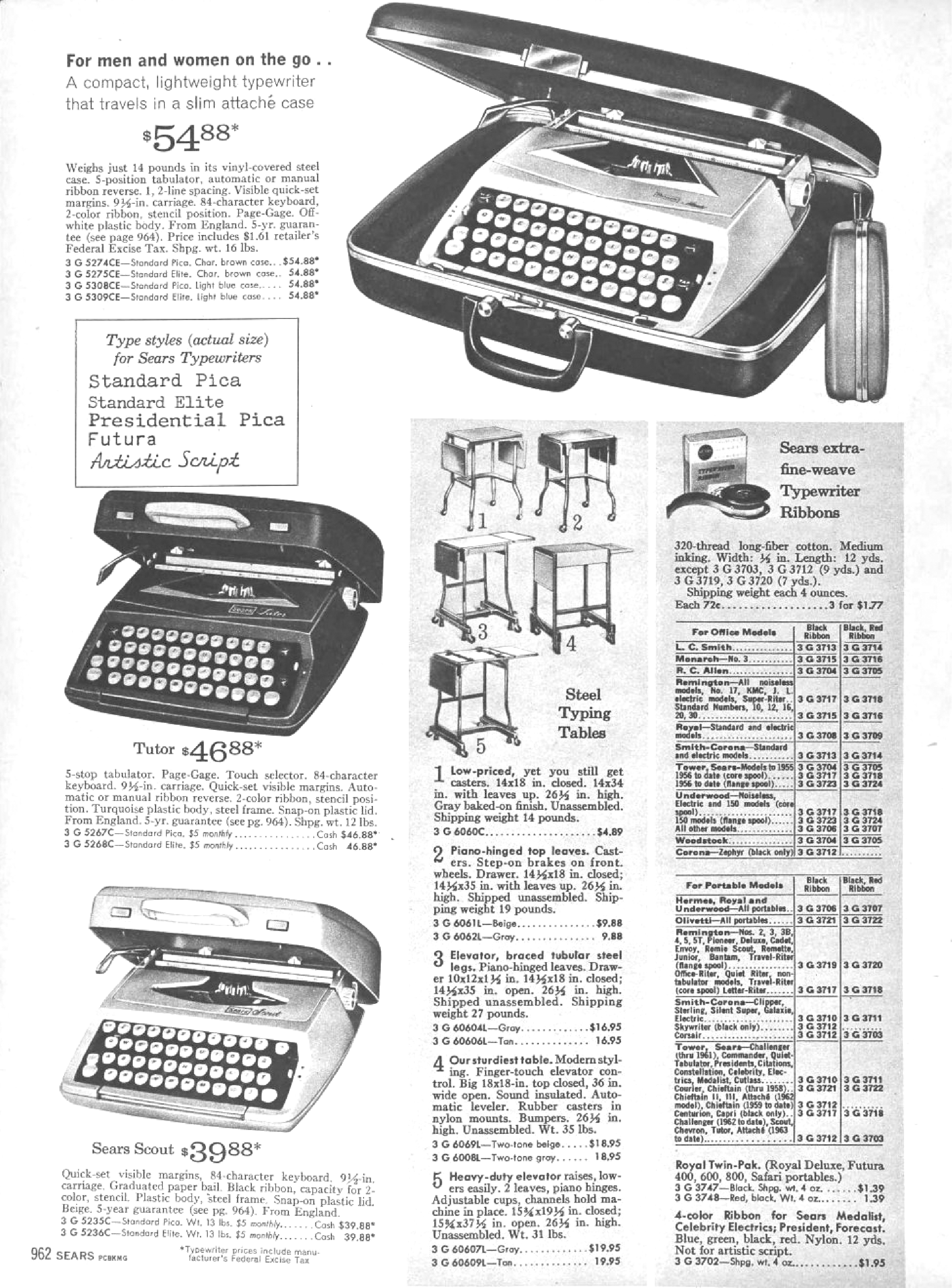
The Sears Tutor was a pretty long-lived design, being offered from 1965 through 1969. The Sears Attache, however – only 1964 to 1966 for that nifty variation – and the Scout only lasted a single year. 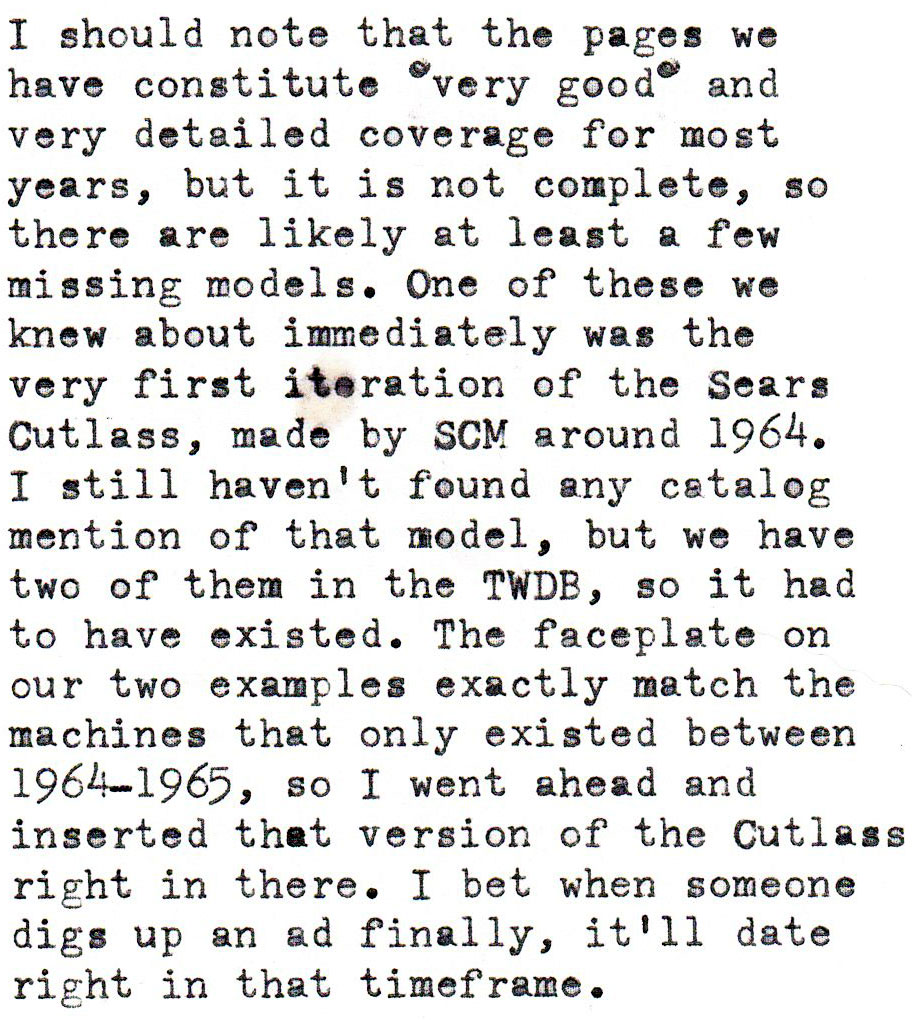
Sears Cutlass in the TWDB Galleries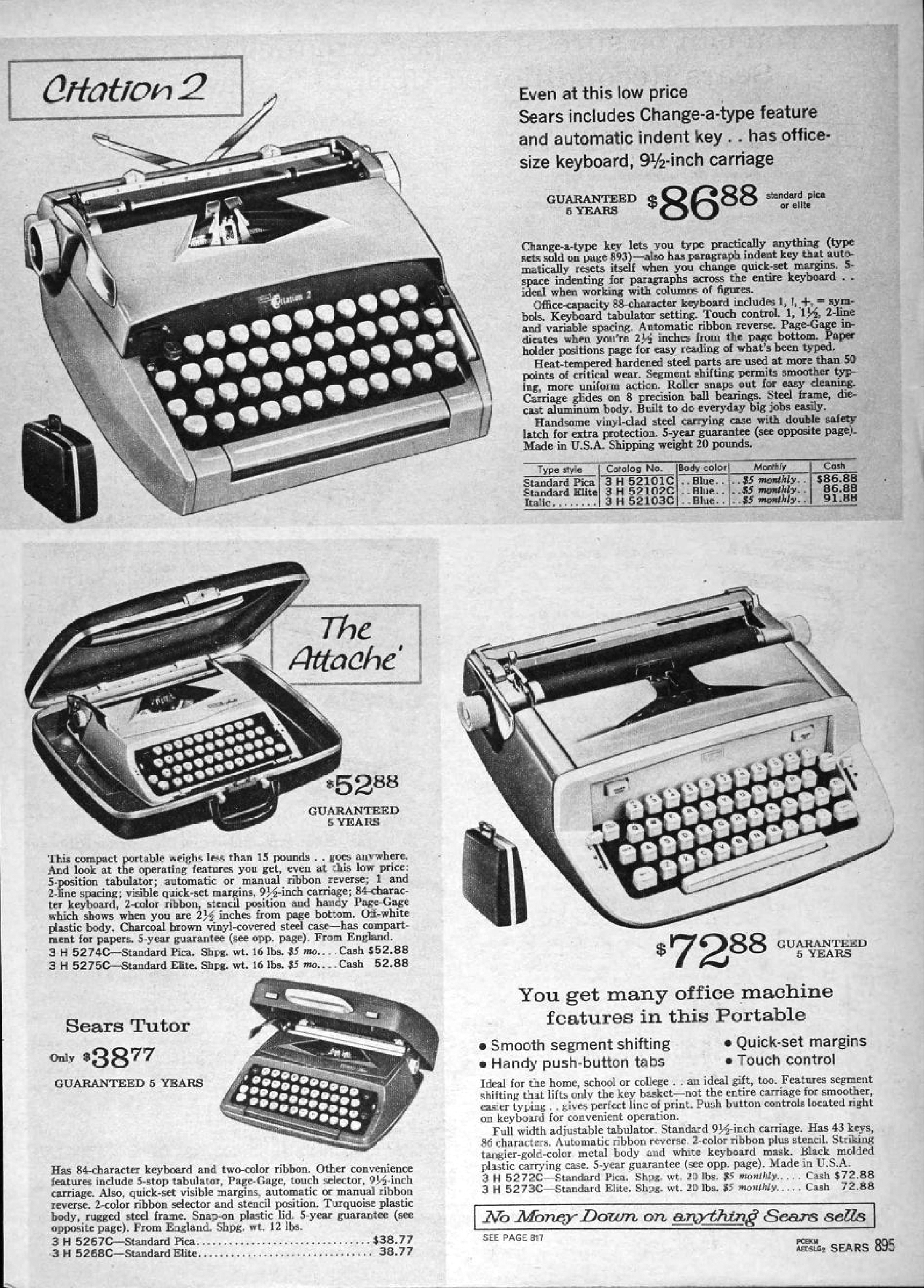
The very first Sears-badged Royal. These are among the last of the USA-Built Royal A-Frames along with the 1968/69 Cutlass. Soon, this tooling would be shipped to Messa in Portugal and Royal Sabres would be Portugese-built. This was also the first Sears typewriter so unremarkable that it was never called anything other than the “Portable” until it was resurrected as the new “Cutlass”. Four wildly different typewriter designs held the “Portable” name for Sears. A brand record for identity swaps in a single model name.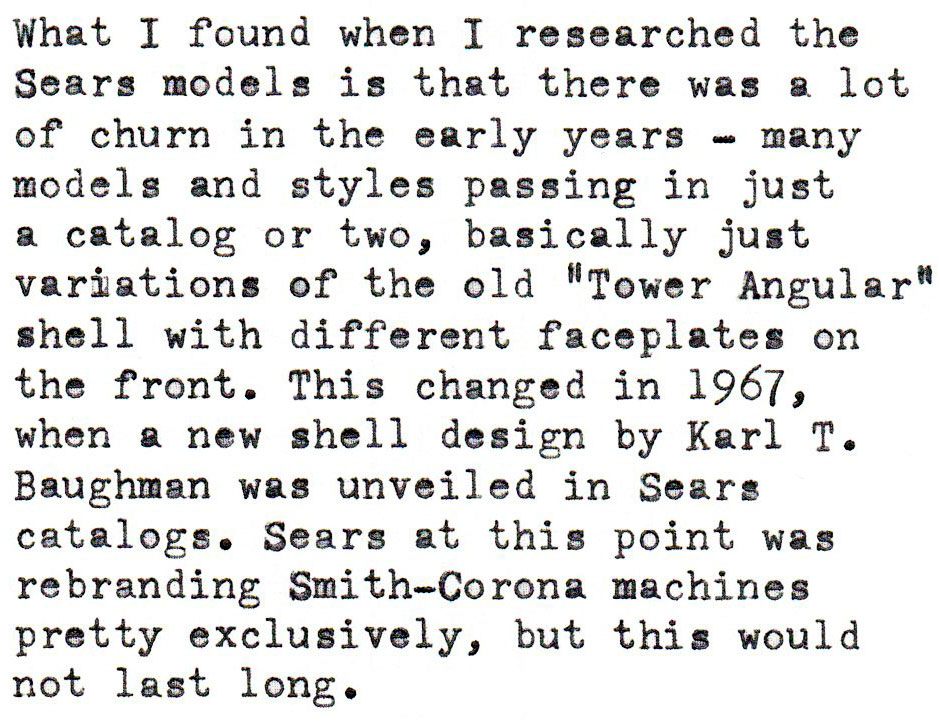

Fall, 1967 sees the introduction of the new Sears shell design by Karl Baughman.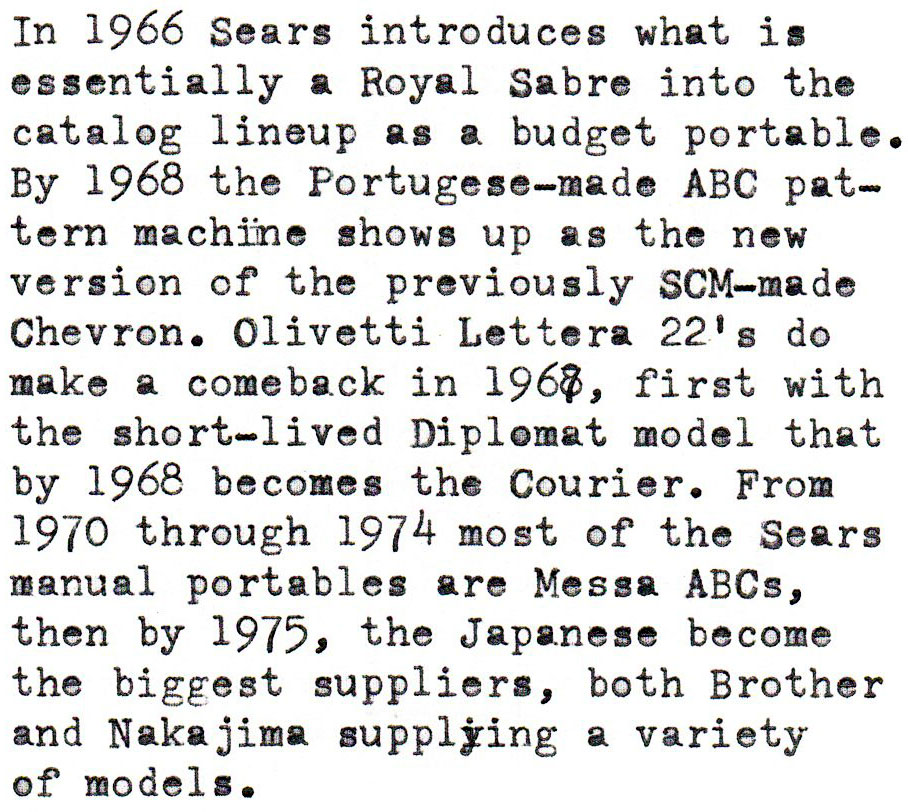

The early 1970’s are all about the Portugese ABC/Cole Steel descendants, but Fall of 1972 sees the first Nakajima in the Sears lineup become the new “Portable”, displacing a Messa ABC design. You probably think of that shell style as “Olympian” and you’d be mostly right. This design is mostly seen badged as an Olympia Olympiette.
oZ Typewriter’s “Sears ‘Throwback’ Portable Typewriter” about his unusual Sears Manual 1.
Sears Manual 1 on the Sears Serial Number page
UPDATE: Hey, Nick Bodemer dug up one ad for the early variation of the Sears Cutlass, and it was indeed sold in February of 1965, right where we expected it to be. Sweet vindication! (:
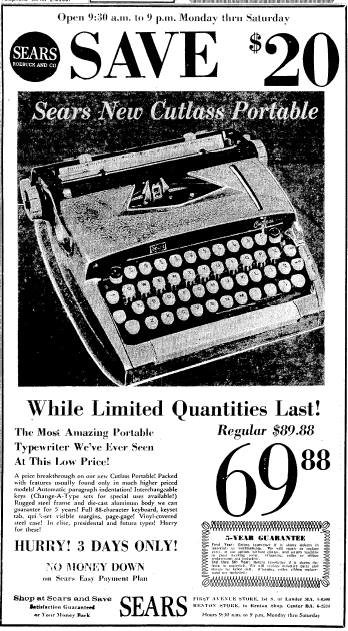
Great work Ted! Thanks for the fantastic information to share with the Typosphere.
Now to compare my Sears typewriters to what I previously found and took a guess at the year of manufacture.
Great job, Ted!
Thanks for all the hard work, Ted! That’d make my newly de-yellowed baby blue typer (J6566710) a 1976 Portable aka Brother JP1. It’s got a plastic shell and painted metal carriage cover and it has the single-bar switchblade paper rest.
Information I literally couldn’t have found yesterday! Thanks again, Ted.
Nice job, Rev! (I think those Sears Messa machines are some of the ugliest, nastiest typewriters out there … Chinese machines excluded.)
I would like to actually find one someday to try. I liked the ABC-pattern Royal Safari that I had for awhile (and have tried others that were equally fine to type on). I’m surprised to hear that you dislike the Sears variations, but what I’m reading when researching Messa doesn’t seem to say otherwise. /:
Thanks for this! I have what may be considered an odd (and seemingly increasing) fascination with re-branded department store typewriters, so seeing this post was like Christmas morning to me! :)
Thanks for your work in untangling the history of the Sears models, surely the most complex and convoluted set of mix-and-matched machines all hiding under the “Sears” name.
At least Kmart stuck with one supplier! :p
Hi Reverend,
Just signed up and have a few photos of my newly acquired Blickensderfer 8 to contribute.
Thanks!
Jim
Welcome, Typewriter Hunter! (:
I just have been gifted an “unremarkable” Sears Portable. This is great information. Sears had good stuff and suppliers back in the day. The portable doesn’t type bad though there’s no paper bail or support. Kind of a pain with bulging or drooping stock on the platen. Still it is solid and after all these years the platen is not age hardened very much. I think it falls somewhere between 1966 and 1968. Thank you very much for this.
Last year I bought one of the “unremarkable” Sears 1983-ish portables, the one without a snappy name but is often referred to as ‘correction’, model 268.52100, and bears a remarkable resemblance to a mid-60s Royal 590 (but you say it may be a Brother?). My avatar on TWDB is of that machine, repainted purple from beige-white, and similar to the one on TWDB mine drops the ‘a’ despite ‘A’ being perfectly inline.
It’s a Japanese Brother JP-1. Not even close to a Royal 590 (which is a Holland-made Halberg Traveller)
Ted, I’ve been digging into the Sears rebranded Smith-Coronas of the 1960s and your info is GOLD. It seems that before your work, many collectors were in the dark about the production years of these machines. THANK YOU. That’s a lot of Sears catalogues to study and I commend you on your work.
Question: Does the 6 in front of the serial number distinguish the rebranded SCM as a 6 Series? I’m wondering why the TWDB notes that some of these Sears machines produced in the early 1960s are considered the “New 5 Series.” With many of the Sears “C” models (Citation, Celebrity, Cutlass, Constellation) the serial numbers begin with “6.” Wouldnt that make them 6-Series machines?
I am trying to wrap my head around the SCM/Sears serial number definitions. Do you know if there was any rhyme or reason for individual letters in SCM machines? 6LEV, 6LT2, 6LTS, 6LTV, 6SE… Random selection of letters? Do similar machines share letters? It would be great if we could understand a bit more about the machine and where it fit on the production timeline simply knowing the serial code.
yes, “6” prefix would suggest 6-Series. Why some are listed as “New 5” is that I didn’t know what the prefix was when compiling the page (:
as for prefix designations they all mean *something*, which is usually easier to figure out for early machines that only have a 2-character prefix, and harder once you get later. For instance a 5T prefix was originally the 5-Series Super, but that model became the Silent-Super and retained the 5T prefix and eventually, “T” just signified medium portable. (though for a short time “T” was also used to signify machines made for Tower [Sears]). Also the “New” 5-Series carries an “5AX” prefix, though “X” is also used at the end of Silent-Super serials to signify the extra key option (machines having a 1/! key)
Other particularly meaningful prefixes are “L” = Long Carriage, “E” = Electric, and sometimes if a letter prefixes the series number, it indicates the reseller that the machine was made for, like say the Musicwriter variant which carries an “M6LT” prefix, signifying “Musicwriter 6-Series Long Carriage Medium Portable”
As for why they are often jumbled up, sometimes a reseller prefix came at the beginning of the prefix and sometimes at the end, depending on whim, I suppose, but as the model names piled up and new prefixes of 4 digits had to be minted, the ordering got pretty random and the positions of the letters in the prefix became less meaningful.